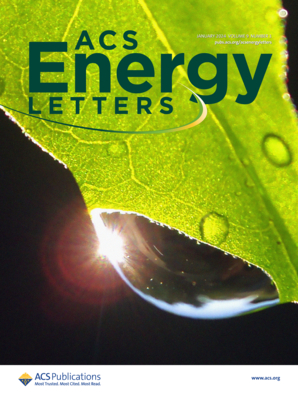Disconnected Lithium Metal Damages Solid-State Electrolytes
IF 19.3
1区 材料科学
Q1 CHEMISTRY, PHYSICAL
引用次数: 0
Abstract
Solid-state batteries with a lithium–metal anode are energy-storage devices that promise increased energy density and improved safety compared with liquid systems. Despite significant developments, the chemomechanical degradation of solid-state batteries represents a significant challenge to their widespread adoption. Specifically, Li-filled cracks (called “dendrites”) and electronically isolated Li inclusions (“dead” Li) are key defects resulting from coupled electrochemical and mechanical degradation during cycling. In this study, we use a symmetrical Li|LLZO|Li cell with a single-crystal electrolyte and demonstrate that an electronically isolated Li-metal inclusion exhibits bipolarity under an external electrical field, which leads to further crack expansion. We suggest that this process of “dead” metal activation accelerates chemomechanical degradation in solid-state batteries with alkali anodes.

求助全文
约1分钟内获得全文
求助全文
来源期刊

ACS Energy Letters
Energy-Renewable Energy, Sustainability and the Environment
CiteScore
31.20
自引率
5.00%
发文量
469
审稿时长
1 months
期刊介绍:
ACS Energy Letters is a monthly journal that publishes papers reporting new scientific advances in energy research. The journal focuses on topics that are of interest to scientists working in the fundamental and applied sciences. Rapid publication is a central criterion for acceptance, and the journal is known for its quick publication times, with an average of 4-6 weeks from submission to web publication in As Soon As Publishable format.
ACS Energy Letters is ranked as the number one journal in the Web of Science Electrochemistry category. It also ranks within the top 10 journals for Physical Chemistry, Energy & Fuels, and Nanoscience & Nanotechnology.
The journal offers several types of articles, including Letters, Energy Express, Perspectives, Reviews, Editorials, Viewpoints and Energy Focus. Additionally, authors have the option to submit videos that summarize or support the information presented in a Perspective or Review article, which can be highlighted on the journal's website. ACS Energy Letters is abstracted and indexed in Chemical Abstracts Service/SciFinder, EBSCO-summon, PubMed, Web of Science, Scopus and Portico.
 求助内容:
求助内容: 应助结果提醒方式:
应助结果提醒方式:


